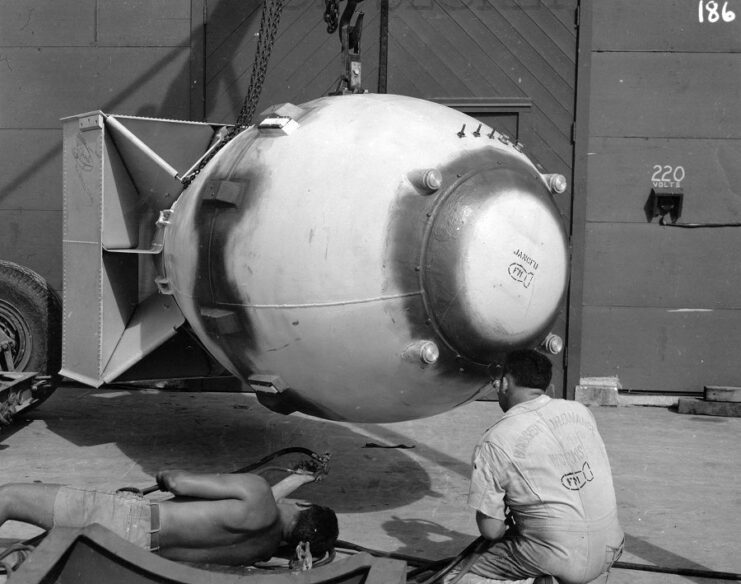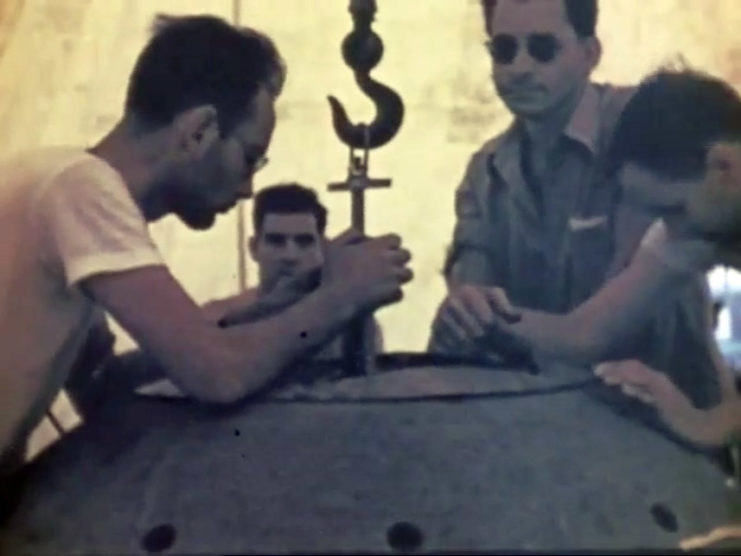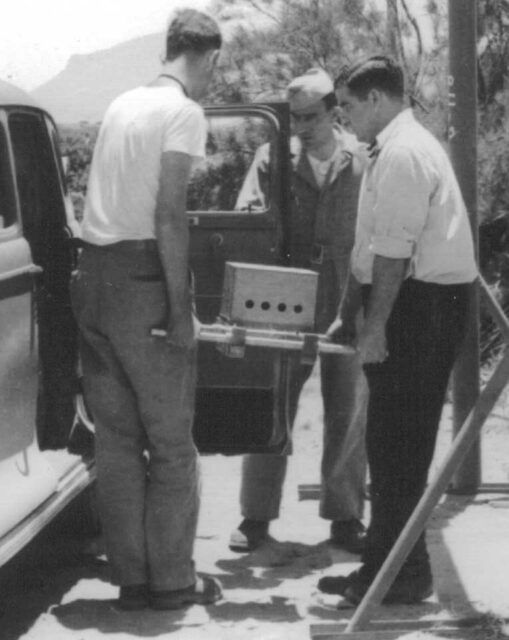In August 1945, the United States unleashed atomic bombs on Hiroshima and Nagasaki—the first and only use of nuclear weapons in combat. The destruction was beyond anything the world had seen, and preparations for a third bomb were already underway. Japan’s surrender soon after made its deployment unnecessary, likely saving many more lives.
Yet that unused plutonium core would soon gain a dark legacy of its own. Within months, it was at the center of two fatal criticality accidents at Los Alamos Laboratory, each claiming the life of a physicist. In time, the core would be remembered by a chilling name: the “Demon Core.”
A third bomb

It’s a common misconception that the Manhattan Project—the U.S. effort to develop atomic weapons—was intended to produce just two bombs. However, this wasn’t the case. In reality, the initiative grew into a massive production program focused on creating multiple nuclear weapons. The vast majority of its multi-billion-dollar budget was devoted to the difficult task of enriching uranium and producing plutonium, materials critical to building the bombs.
By mid-1945, enough fissile material had been gathered to construct three bombs, with a fourth in development. These supplies were allocated for the Trinity Test and the eventual deployment of the Little Boy and Fat Man bombs. When Japan did not immediately surrender after the first two bombs were dropped, efforts to prepare a third bomb were underway, scheduled for August 19.
However, Japan announced its surrender on August 16.
Most scientists and military personnel involved in the Manhattan Project anticipated the need for more than just two bombs to secure Japan’s capitulation. Some even feared the conflict might reignite despite a surrender. Ultimately, the third bomb was never used, leaving the U.S. with a 6.2 kg, nine-cm wide plutonium core. This core was later utilized for further testing and incorporated into subsequent projects.
Demon Core

First accident

In 1945, physicist Harry Daghlian was conducting this experiment when it took a tragic turn. While positioning neutron-reflecting tungsten carbide blocks around the core to bring it close to criticality, he accidentally dropped one of the blocks onto it. Although Daghlian quickly removed the block, the damage was already done. In that brief moment, the core became supercritical, emitting a deadly burst of radiation.
Daghlian suffered through three weeks of intense radiation sickness before succumbing to his injuries. Following his death, stricter safety protocols were implemented to prevent similar incidents.
The following year, Daghlian’s colleague, Louis Slotin, carried on with the experiments. Slotin was a brilliant physicist, though his approach to safety was known to be relaxed.
In Slotin’s version of the experiment, two half-sphere neutron reflectors were carefully brought closer around the core to increase its activity. Metal spacers were used to keep the half-spheres from fully covering the core, minimizing the risk of another accident.
Second incident

Louis Slotin was well-known for taking dangerous shortcuts in the lab, often ignoring official safety guidelines. Rather than using the required spacers, he favored a faster—but far more perilous—technique. With a flathead screwdriver, he would hold apart two neutron-reflecting half-spheres of plutonium, a maneuver he had repeated so often it seemed routine. His colleagues grimly referred to the practice as “tickling the dragon’s tail.”
Despite numerous warnings from fellow scientists about the risks, Slotin continued his unorthodox approach.
On May 21, 1946, during a demonstration at Los Alamos, he performed the procedure once again. As he carefully lowered the top hemisphere toward the plutonium core, he used the screwdriver to keep them separated.
Then, disaster struck. The tool slipped, the halves clamped shut, and the core went supercritical. A blinding flash of blue light filled the room as a burst of lethal radiation spread outward—an unmistakable sign that the experiment had gone catastrophically wrong.
End of the ‘Demon Core’

Slotin quickly pulled the neutron reflectors apart, but just like Daghlian, the damage was already done. He was exposed to an extremely high dose of radiation. Since he had been leaning directly over the core at the time of the accident, he absorbed most of the radiation, likely saving the others in the room from fatal exposure.
Within minutes, Slotin began showing symptoms of severe radiation poisoning. He passed away just nine days later.
After causing two deadly accidents, the plutonium sphere became known as the “Demon Core”. It was originally meant to be used in the Operation Crossroads nuclear tests, but that never happened. Instead, it was eventually melted down and repurposed into other nuclear cores.
